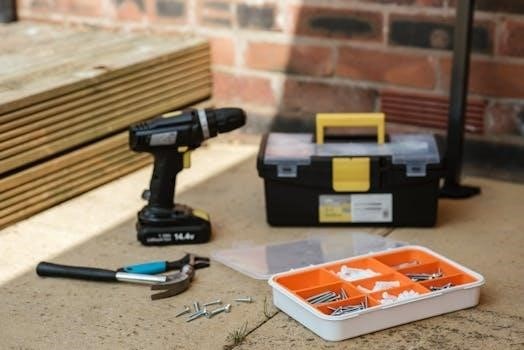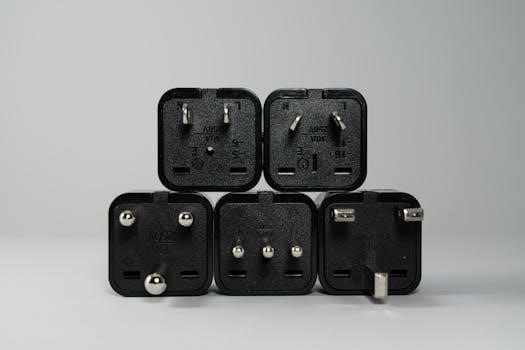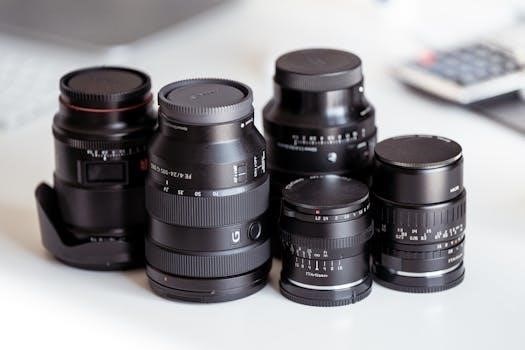
Considering a shift from manual to automatic? Conversion kits offer a way, though they’re often complex and costly. These kits involve more than just a transmission swap. They may require significant changes to a vehicle’s drivetrain. The process can be an extensive undertaking with many parts involved.
Overview of the Conversion Process
The conversion process from a manual to an automatic transmission is a complex undertaking that goes far beyond simply swapping out gearboxes. It typically begins with the removal of the existing manual transmission and all its associated components like the clutch pedal assembly and linkages. The next phase involves installing the automatic transmission, which includes ensuring proper fitment and alignment. This often requires new transmission mounts to accommodate the different size and configuration of the automatic unit. Modifications to the driveshaft are usually necessary, as automatic transmissions frequently have different lengths than their manual counterparts. Furthermore, the process includes intricate work with the vehicle’s electrical system, where wiring harnesses and computer adjustments are vital for the automatic transmission to function correctly. This could also mean adding a new shifter assembly and linkages, and possibly more. This conversion can also affect the cost and feasibility.

Required Components for Conversion
A successful manual to automatic conversion demands several key parts. These include a new automatic transmission unit, shifter assembly, modified driveshaft, specific transmission mounts, and wiring harness adjustments, along with other necessary components.
Automatic Transmission Unit
The automatic transmission unit is the core component of this conversion. Selecting the correct unit is crucial, as it must be compatible with your vehicle’s make, model, and engine specifications. These units often come from salvage cars or are purchased new or rebuilt. The unit has different gear ratios and torque converter characteristics compared to manual transmissions. The automatic unit will dictate the driving feel and performance after the conversion. The physical size and mounting points must also be assessed to ensure a proper fit within the existing vehicle chassis. The transmission’s electronic controls must also be considered to ensure seamless integration with the vehicle’s systems. An automatic transmission flywheel is needed for proper connection to the engine. The choice of an automatic transmission will impact the overall cost and effort of the conversion.
Shifter Assembly and Linkages
The shifter assembly and linkages are critical for controlling the automatic transmission. Unlike a manual setup, an automatic shifter has different positions, such as Park, Reverse, Neutral, and Drive. The shifter must be compatible with the chosen automatic transmission. The mechanical linkages connect the shifter to the transmission, allowing the driver to select gears. Proper installation is essential for smooth and reliable gear changes. The original manual setup will need to be completely removed. The new shifter must fit in the vehicle’s interior, and its location must be ergonomic. The linkages must be correctly routed and adjusted to avoid binding or misalignments. Some conversions may require custom fabrication to ensure proper fit. Wiring for the shifter position indicator may also be needed. A new gear lever and its associated mechanisms are also required.
Transmission Mounts
Transmission mounts are crucial for securing the automatic transmission to the vehicle’s chassis. These mounts absorb vibrations and keep the transmission stable. Automatic transmissions often have different shapes and sizes compared to manual ones. Therefore, existing manual transmission mounts may not be compatible. New mounts designed for the specific automatic transmission are necessary. These mounts must align correctly with the chassis to prevent undue stress on the drivetrain. Proper installation is critical for reducing noise and vibrations. Incorrect mounting can lead to premature wear or damage. Some vehicle conversions may require custom-made mounts. The mounts must be robust enough to handle the additional weight and torque of the automatic transmission. The material of the mounts will also affect performance and longevity. Consideration should be given to both rubber and polyurethane options. Incorrect transmission mounts can also cause drivetrain misalignment. This misalignment can lead to a number of problems. Proper selection and installation is crucial.

Driveshaft Modifications
Driveshaft modifications are typically a necessary step when converting from manual to automatic transmission. The length of the driveshaft can vary between manual and automatic setups. Automatic transmissions often have different output shaft lengths. This requires alterations to ensure proper fitment. A driveshaft that is too short or too long can cause severe vibrations. These vibrations can lead to damage to the transmission and differential. Driveshaft modifications might involve shortening or lengthening the existing driveshaft. Alternatively, a completely new driveshaft may be required. The new driveshaft must be balanced to prevent vibrations at high speeds. The correct u-joints must be used to match the transmission and differential. Incorrect u-joints can lead to failure of the system. Sometimes, the automatic transmission output flange requires a different driveshaft flange. This will depend on the specific transmission used. Precise measurements are vital for accurate modifications. Any errors can result in costly repairs. Professional installation is highly recommended to avoid complications. These modifications ensure smooth power transfer. It prevents damage and prolongs drivetrain life.
Wiring Harness and Computer Adjustments
The conversion from a manual to automatic transmission requires significant modifications to the vehicle’s wiring harness and computer system. Automatic transmissions have various electronic sensors and solenoids that need proper connection. These signals control gear shifting and transmission performance. The existing wiring harness from the manual setup is usually insufficient. It lacks the necessary circuits for an automatic transmission. A new or modified wiring harness will be necessary. It will need to integrate with the automatic transmission’s control module. This module communicates with the vehicle’s main computer. The vehicle’s computer needs to be reprogrammed to recognize the automatic transmission. The computer needs to understand the new gear ratios and shifting patterns. The transmission control unit (TCU) may be required for proper operation. This unit might be separate or integrated into the main computer. The adjustments ensure smooth shifting and proper function. Wiring diagrams are needed for correct wiring connections. Incorrect wiring can cause transmission damage. Professional help is recommended for wiring and computer adjustments. This ensures safety and performance. These changes are vital for a successful conversion; Without proper wiring and computer calibration, the transmission will not work correctly.

Cost Considerations
The financial aspect of converting from a manual to an automatic transmission involves several factors. Parts, labor, and unexpected expenses contribute to the overall cost. It’s crucial to budget carefully before starting the project. The total amount can vary greatly.
Parts Costs
The expense of parts for a manual to automatic transmission conversion can vary significantly. The automatic transmission itself is a major cost. Prices range widely depending on whether you choose a new or used one. Flywheels, gear levers, and associated components add to the expense. You will need a full set up of clutch wires to the master cylinder and a slave cylinder. Transmission mounts will also be needed. Furthermore, a manual driveshaft will be required, as automatic and manual ones differ in length. The cost may also depend on the specific vehicle and the type of automatic transmission you select, with some requiring custom fabrication, which will also add to the parts costs. Expect to spend anywhere from $2,500 to $6,000 just on parts. It’s advisable to research and source parts carefully to manage the overall budget for your conversion project.
Labor Costs
Labor costs for a manual to automatic transmission conversion can be a substantial part of the overall expense. The complexity of the conversion process means it’s not a simple bolt-on job. It often requires custom work, which increases labor hours. Shops specializing in custom work may charge higher rates for their expertise. The time involved in removing the old system, installing the new one, and making necessary adjustments can add up quickly. Furthermore, setting up the clutch pedal and associated linkages, as well as wiring harnesses, requires careful work. The labor costs can range from a few thousand dollars to much more, depending on the shop’s hourly rate and the complexity of the vehicle’s specific requirements. Always get quotes from multiple shops before committing to the work to ensure reasonable labor costs for the conversion.
Additional Expenses
Beyond the core parts and labor, several additional expenses can impact the total cost of a manual to automatic conversion. These might include the purchase of a salvage car for parts which can add to the initial cost, though it may allow some recoup through selling the remaining parts. If the donor car is not available, you might need to source specific parts individually. Also, unforeseen problems during the conversion may incur extra costs. The vehicle might need computer adjustments or a new wiring harness, adding to the overall bill. Don’t forget about costs for fluids, such as transmission fluid and other consumables, which are often not included in the basic estimates. There might also be costs associated with driveshaft modifications or custom fabrication if the standard parts don’t fit. Planning for these additional expenses is vital in budgeting for a manual to automatic conversion.

Feasibility and Considerations
Switching from manual to automatic transmission raises vital feasibility questions. Vehicle compatibility is crucial, not all cars are good candidates. Long-term implications must be weighed carefully, including costs and impact on resale value.
Vehicle Compatibility
The feasibility of converting from a manual to an automatic transmission heavily relies on vehicle compatibility. Not all vehicles are created equal, and some are simply not designed to accommodate such a significant change. Older cars with simpler drivetrains might seem easier to modify, but even they present unique challenges. A key consideration is whether an automatic version of the same car model exists. If it does, the process is typically less complicated, assuming they share the same chassis and body design. However, differences in tunnel design for automatic transmissions can add significant hurdles. The presence of adequate space for the larger automatic transmission and its related components is a primary concern. Modern vehicles, with their complex electronic systems, pose the biggest challenges. They often require not only physical modifications, but also changes to the vehicle’s computer and wiring harness. These modifications can be significantly more difficult and costly, making the conversion impractical for many. Thorough research on your specific vehicle model is crucial to determine the viability of such a conversion.
Long-Term Implications
Converting from a manual to an automatic transmission brings several long-term implications to consider beyond the initial cost and installation. One significant aspect is the potential impact on the vehicle’s resale value. Many car enthusiasts and buyers prefer manual transmissions, so converting to an automatic could limit your potential buyer pool and potentially lower the vehicle’s value. Furthermore, the reliability of the conversion and the automatic transmission itself is another key consideration. A conversion that is not done correctly can lead to costly repairs down the line. The long-term maintenance of an automatic transmission also should be considered, as they require more complex servicing than manual ones. Moreover, any modifications could affect the vehicle’s original warranty, if any exists. It is also essential to be aware of any potential legal implications, particularly if the conversion impacts vehicle safety or compliance with local regulations. The overall durability of the vehicle might be affected. Lastly, the driving dynamics of the car will be altered, changing the handling and feel of the vehicle.